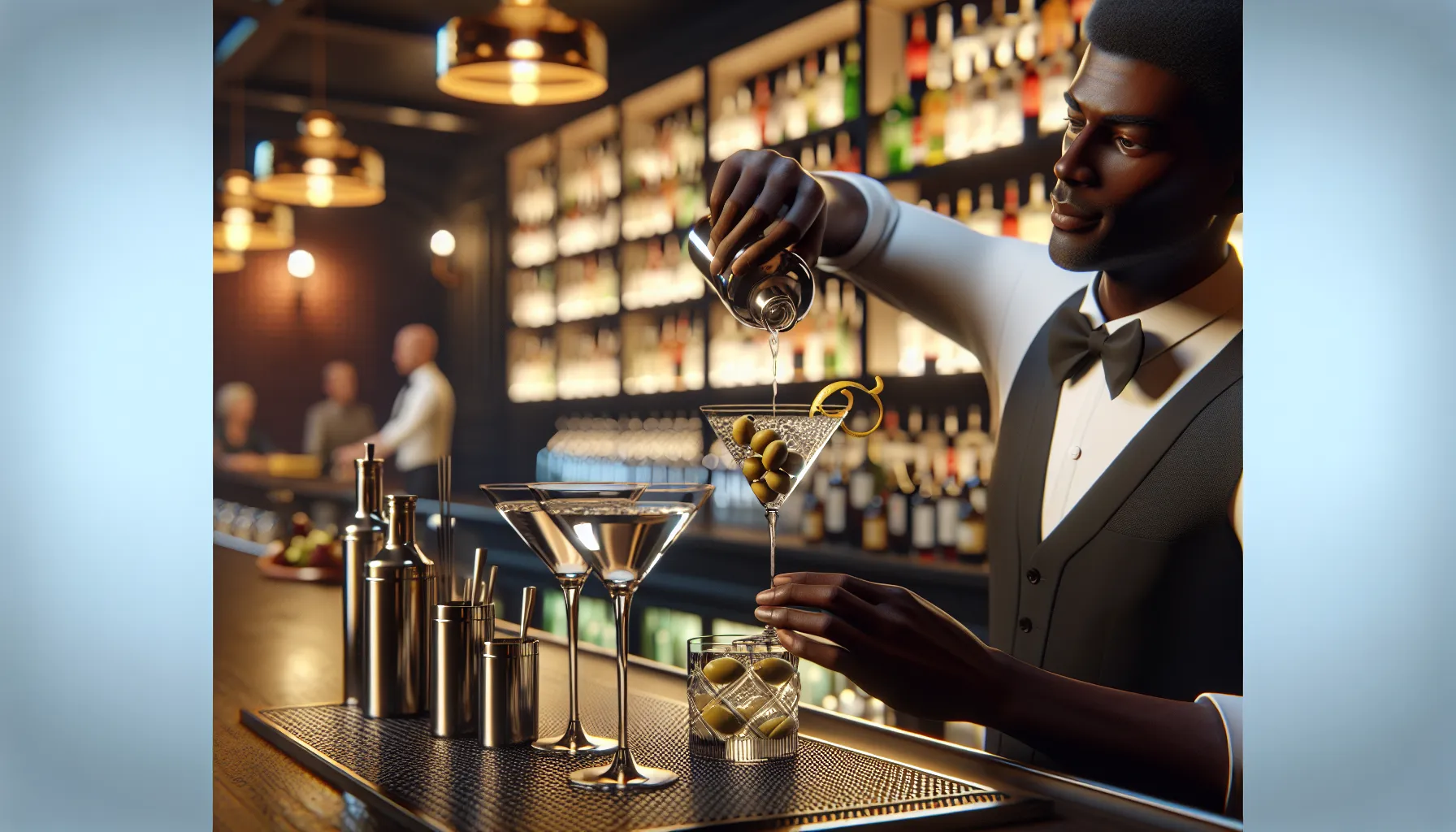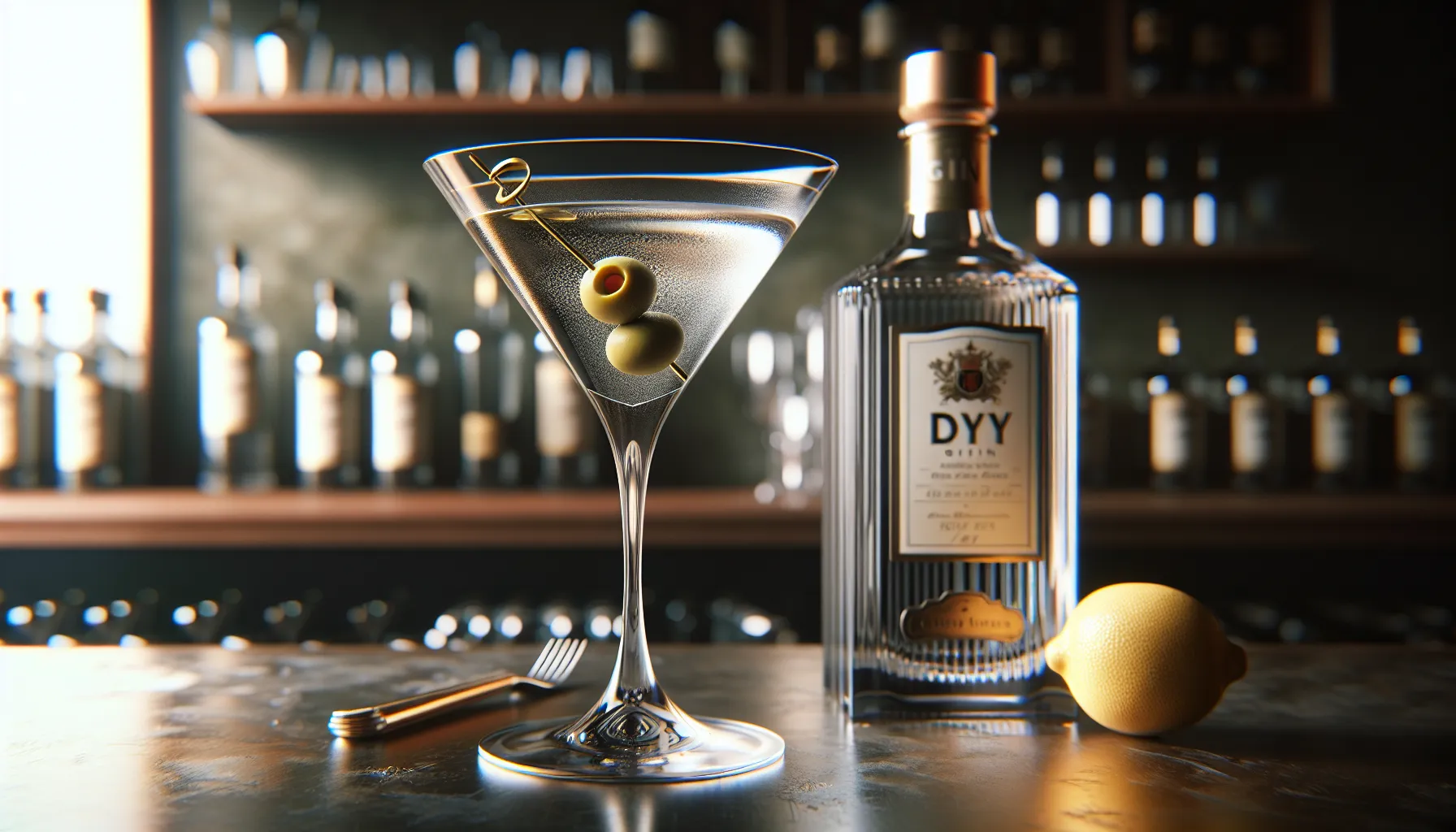Key Takeaways
- A martini is a timeless cocktail made with gin (or vodka) and dry vermouth, offering a crisp and elegant drinking experience.
- The classic martini ratio is typically 5:1 (spirit to vermouth), but adjustments like “dry” or “extra dry” allow for customization based on taste.
- Popular variations include the dirty martini (with olive brine), vodka martini, and creative twists like the Vesper or flavored versions.
- High-quality ingredients—premium spirits, fresh vermouth, and complementary garnishes—are essential for a perfect martini.
- Precision matters: use chilled glassware, measure ingredients accurately, and choose stirring for a silky cocktail or shaking for a frothy texture.
- Experiment with ratios, garnishes, and preparation techniques to craft your signature martini while avoiding common mistakes like skipping proper chilling or using poor-quality ingredients.
There’s something timeless about a martini. It’s not just a cocktail—it’s a statement, a little slice of elegance in a glass. Whether you’re channeling your inner James Bond or just looking to impress at your next gathering, mastering the martini is a skill worth having.
I’ll admit, the beauty of a martini lies in its simplicity, but that’s also what makes it tricky. With just a few ingredients, every detail matters—how you mix, the proportions, even the glass you use. Don’t worry, though. Once you get the hang of it, crafting the perfect martini becomes second nature.
Ready to shake (or stir) things up? Let’s dive into the essentials of making this classic cocktail and discover how you can make it your own.
What Is A Martini?
A martini is a classic cocktail made with a combination of gin and dry vermouth, served chilled in a stemmed glass. It has a crisp, clean flavor that showcases its simple ingredients. Optional garnishes like a green olive or a lemon twist elevate its presentation and add subtle flavor notes.
The standard martini ratio is typically 2.5 parts gin to 0.5 parts vermouth, but preferences vary. Some enjoy a “dry” martini with less vermouth, while others opt for an “extra dry” version with almost none. The drink’s balance depends on how the ingredients complement each other.
Gin is the traditional base spirit; however, vodka has become a popular substitute. This creates a variation known as a vodka martini. Brisk stirring or gentle shaking with ice ensures the perfect chill and a diluting effect that balances the bold flavors.
Types Of Martinis

Martinis come in several variations, each offering a unique twist on the original recipe. Here are some of the most popular types and their defining characteristics.
Classic Martini
The classic martini is the foundation of all variations. I create it by mixing gin and dry vermouth in a standard 5:1 ratio, then strain it into a chilled glass. A lemon twist or green olive serves as the garnish, adding either a citrusy aroma or a briny touch.
Dirty Martini
To make a dirty martini, I add a splash of olive brine to the classic recipe. This enhances the drink with savory, salty notes. Usually garnished with one or more olives, this variation appeals to those who enjoy bolder flavors.
Vodka Martini
The vodka martini replaces gin with vodka, resulting in a cleaner and more neutral taste. I often use the same ratio of vodka to vermouth as with the classic version unless someone prefers it extra dry. A lemon twist or olive can also complement this variation, depending on taste.
Other Popular Variations
There are options for martini enthusiasts seeking even more diversity. The Gibson features a pickled onion garnish, delivering a tangy edge. The Vesper combines gin, vodka, and Lillet Blanc, offering a richer, layered flavor. Flavored martinis—like espresso and chocolate—provide modern, creative takes for wider appeal.
Essential Ingredients For A Perfect Martini

Creating a flawless martini starts with carefully selected ingredients. Each component plays a crucial role in achieving the drink’s signature flavor and sophistication.
Base Alcohol
Gin is the traditional base for a martini, known for its botanical notes that complement dry vermouth. Popular choices include London Dry gins like Tanqueray or Beefeater, offering a classic profile. Some prefer vodka as an alternative, delivering a smoother, subtler flavor profile. Select high-quality spirits as the foundation directly impacts the final taste.
Vermouth
Dry vermouth provides the complexity and balance essential for a classic martini. Brands like Noilly Prat or Dolin stand out for their crisp, herbal profiles. For a “wet” martini, use more vermouth; for “dry” or “extra dry” versions, decrease it. Refrigerate vermouth after opening to preserve its freshness and flavor.
Garnishes
Classic martini garnishes include green olives for a savory touch or lemon twists for a hint of citrus zest. Use cocktail onions for a Gibson or a splash of olive brine for a dirty martini. Freshness and presentation matter—select garnishes that enhance both flavor and appearance.
Step-By-Step Guide On How To Make A Martini

Making a martini involves precision and a touch of personal preference. Follow these steps to create a perfectly balanced cocktail.
Choosing The Right Equipment
I always start by gathering the essential tools for mixing. A mixing glass or shaker, a bar spoon, a strainer, and a stemmed martini glass are non-negotiable items. A jigger ensures accurate measuring of ingredients. I chill the martini glass in advance for the perfect serving temperature.
Mixing Or Shaking: What’s The Difference?
Stirring and shaking each produce different results. For a classic martini, I prefer stirring, as it creates a smooth, crystal-clear drink. I use a bar spoon to gently stir gin and vermouth with ice for about 30 seconds to maintain clarity. When I make a vodka martini or a variation like the Vesper, I shake the ingredients vigorously with ice for 10-15 seconds, giving the drink a cloudy, frothy texture.
Perfecting The Ratio
Balancing gin or vodka with dry vermouth defines the martini’s character. For a traditional martini, I stick to a 5:1 ratio of spirit to vermouth, measuring 2.5 oz gin or vodka and 0.5 oz dry vermouth. If I’m making a dry or extra dry martini, I reduce the vermouth to adjust the flavor profile. Accuracy matters, so I always measure carefully with a jigger.
Tips And Tricks For The Best Martini Experience
Choose Quality Ingredients
I always recommend using premium gin or vodka for the base. High-quality spirits and fresh vermouth create the best flavor. Check the vermouth’s freshness, as its flavor fades after opening.
Chill Everything
Chilling is essential for a perfectly crisp martini. I pre-cool the glass in the freezer or with ice water. Using chilled spirits also ensures the drink stays cold longer without over-dilution.
Master the Garnish
The right garnish elevates the drink. Whether it’s a lemon twist, olive, or cocktail onion, I select fresh options that complement the spirit’s profile. For dirty martinis, high-quality olive brine enhances the savory taste.
Stir or Shake with Purpose
When I make a martini, I stir for a silky, clear texture or shake for a frothy, lighter consistency. Timing is key, with 30 seconds of stirring or 10 seconds of shaking usually ideal.
Adjust Ratios and Customize
I experiment with proportions to match preferences. For a bold gin martini, I use a 5:1 ratio, but for subtler tastes, increasing vermouth works wonders.
Try Unique Variations
Exploring styles like the dirty martini or Vesper adds variety. If I crave modern twists, creating espresso or chocolate martinis makes the experience exciting.
Pay Attention to Ice
The quality of ice impacts dilution and temperature. I use clear, large cubes to ensure slower melting while mixing.
Practice Precision
Using a jigger helps me measure spirit and vermouth quantities accurately for consistent flavor. Attention to detail creates the perfect martini every time.
Common Mistakes To Avoid When Making A Martini
Skipping the chill ruins the martini’s crispness. Always chill the glass and ingredients to ensure a cold, refreshing drink.
Overusing vermouth disrupts balance. Stick to the recommended ratio, whether 5:1 for a classic martini or adjusted to personal taste.
Choosing poor-quality ingredients affects flavor. Use premium gin or vodka and fresh dry vermouth for a superior experience.
Improper mixing impacts texture. Stirring creates a silky, clear martini, while shaking adds a frothy texture. Match your method to the desired outcome.
Skipping precise measurements leads to inconsistency. Use a jigger for accuracy, maintaining the proper ratio in every pour.
Ignoring garnish quality diminishes presentation. Opt for fresh garnishes like green olives, lemon twists, or cocktail onions to enhance the look and taste.
Neglecting ice quality dilutes flavors. Use large, clean ice cubes to chill the drink effectively without over-watering it.
Conclusion
Mastering the martini is all about embracing the little details that make it exceptional. From the quality of your ingredients to the chill of your glass and the care you put into mixing, each step matters. It’s not just a drink; it’s an experience that reflects your personal touch.
Whether you stick to the classic recipe or explore creative variations, the martini offers endless possibilities to suit your preferences. With a bit of practice and experimentation, you’ll not only perfect your technique but also discover the joy of crafting a cocktail that’s as timeless as it is sophisticated. Cheers to your martini journey!
Frequently Asked Questions
What is a martini?
A martini is a classic cocktail made with gin and dry vermouth, served chilled in a stemmed glass. Optional garnishes like a green olive or lemon twist enhance its flavor and presentation.
What is the standard martini ratio?
The standard martini ratio is 2.5 parts gin to 0.5 parts dry vermouth, but variations exist to suit individual preferences.
What is a dry martini?
A dry martini uses less vermouth, resulting in a stronger, less sweet drink. An “extra dry” martini may use just a few drops, or none at all.
Can a martini be made with vodka?
Yes, a vodka martini replaces gin with vodka. It offers a smoother, cleaner taste compared to the traditional gin martini.
Should you stir or shake a martini?
Traditionally, martinis are stirred for a smooth, clear result. Shaking, made popular by James Bond, creates a frothier texture and slightly dilutes the drink.
What is a dirty martini?
A dirty martini incorporates olive brine into the mix, adding a savory, salty flavor. It’s typically garnished with olives.
What are some popular martini variations?
Popular variations include the Gibson (with a pickled onion), the Vesper (gin, vodka, Lillet Blanc), and flavored versions like espresso or chocolate martinis.
What garnishes are best for a martini?
Classic garnishes include a lemon twist or a green olive. For variations, cocktail onions, capers, or even edible flowers can elevate the presentation.
How do I avoid common martini mistakes?
Use high-quality spirits, chill your glass, stick to precise measurements, and avoid overusing vermouth. Always stir or shake with purpose and choose fresh garnishes.
Does the quality of ice matter when making a martini?
Yes, quality ice impacts dilution and temperature. Use clean, fresh ice to maintain the drink’s crispness and overall balance.
What equipment do I need to make a martini?
You’ll need a mixing glass or shaker, a bar spoon, a strainer, and a chilled martini glass for the perfect cocktail experience.
How important is vermouth in a martini?
Vermouth adds complexity and balance to the martini. Adjusting the amount can significantly alter the drink’s flavor to suit personal tastes.
How can I perfect my martini at home?
Focus on mastering the spirit-to-vermouth ratio, use chilled, quality ingredients, and practice stirring or shaking techniques. Precision and experimentation will help refine your personal recipe.

